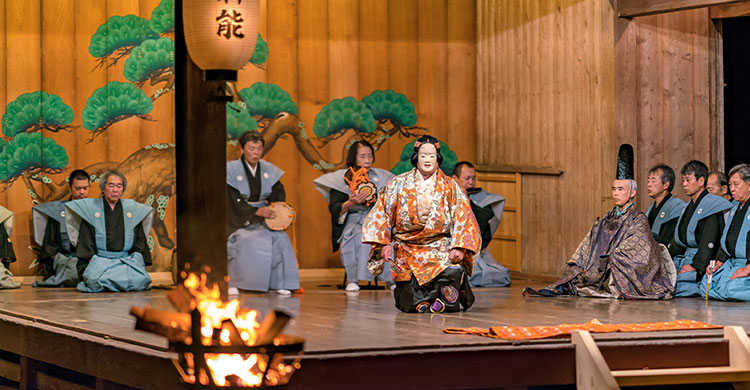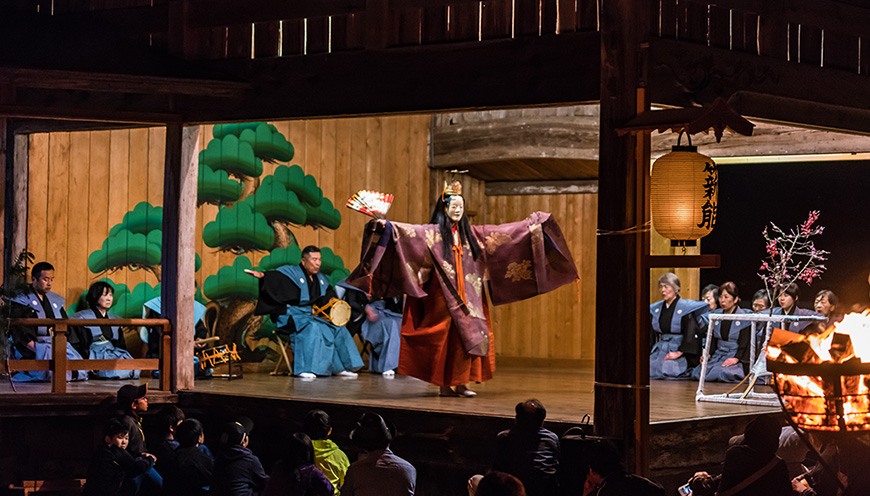Hello everyone how have you been? Today’s theme is “Noh/Nohgaku” (The Japanese classical drama) which was recognized by UNESCO as an intangible cultural heritage in 2008, along with “Bunraku“,and “Kabuki“, all of which are representatives of Cool Japan.
Contents
What are Japanese traditional performing arts?
As I mentioned the three classical performance arts listed on UNESCO, they are “Noh/Nohgaku“(Noh play,drama or Noh farce), “Bunraku” (Japanese doll-puppet theater), and “Kabuki“.
Frankly speaking, however, it’s difficult for even the Japanese to explain how three differences are if we haven’t seen them in theatre.
These are dramas born from the lives of ordinary people, so the content is trivial, such as tragedies, comedies, romances, small quarrels, and the like.
That’s because they are apparently quite similar, at first glance, to their performance on stage except masks on their face for Noh and Bunraku doll-puppet for Bunraku.
Here’s an outline of the three as follows,
★ Noh is a play based on classics using masks (The name of Predecessor “Sarugaku” has also been changed to “Noh” by combining Noh and “Kyogen” which was a comedy play/drama characterized by/featuring comical movements)
★ Bunraku is a play using Bunraku dolls (we talk it later)
★ Kabuki is entertainment for the masses
What’s “the Japanese classical drama” (Noh/Nohgaku)?
It is a traditional form of masked drama that has been performed since the 14th century.
Many plays have just two characters, and musical accompaniment is provided only by a flautist, several drummers, and a chorus.
Noh actors move in a very distinctive way, wearing white tabi(socks), they use short sliding steps known as suriashi.
It has a history of around 600 years. Kanami and his son Zeami developed it by combining aristocratic dances and popular folk dances.
It is unlike any other kind of theatre in that it retains its original from and Buddhist overtones.
Today, most Noh performances are presented indoors, but the stages all retain pillars and a roof that reflect the original covered outdoor stages where plays were perfomed.
Every indoor Noh stage also has a bridge-like walkway with railings. In plays in which the protagonist is a ghost, this is used as the metaphorical pathway between this world and the other world.
A play called Atsumori features the ghost of a 12th century Heikie warrior who was killed in battle at the age of 16.
The ghost expresses his unresolved feelings to his former foe. Japan’s medieval period was plagued by war, and the constant fear of death made people see life as a temporary illusion. This kind of Buddhist philosophy is reflected in Noh plays.
Masks are essential props in Noh. By wearing a specific mask, an actor can become a young boy or an old woman, or even a supernatural being, whether it’s an ogre or a deity. Noh actors emote using just a mask and minimal movements.
Here, the actor raises his hand in front of his face, partially covering his eyes. Called shiori, this action expresses wailing in great sorrow. Noh acting is all about achieving maximum effect with minimal stylized movements like this.
Unchanged for centuries, Noh continues to give us a glimpse of the medieval sense of values and beauty. Contemporary drama tends to focus on realism, but Noh is different and is engrossing in a completely different way.
So why don’t you go to Noh theater to have a taste of a over 600-year history Noh and where equipped with earphone guide facility which can hear commentary on performance in English.














Leave a Comment